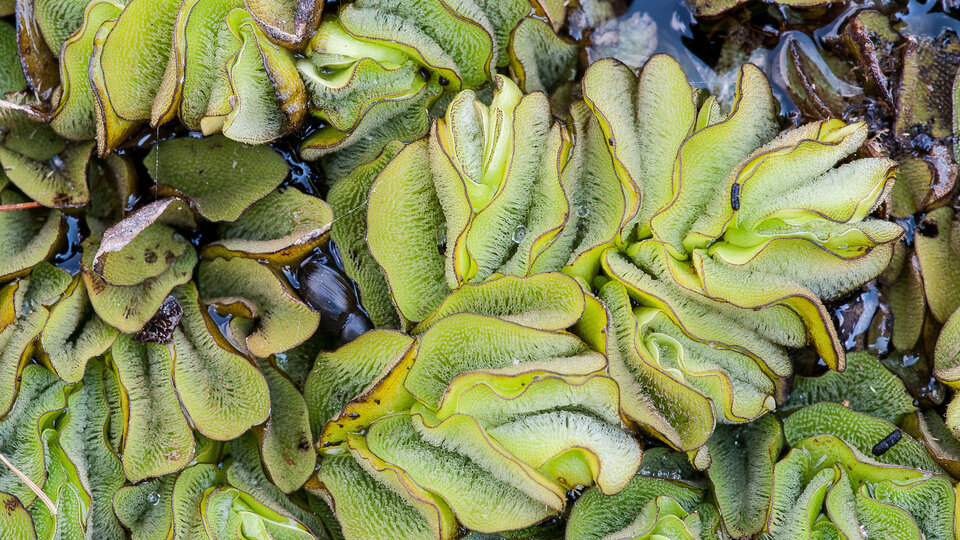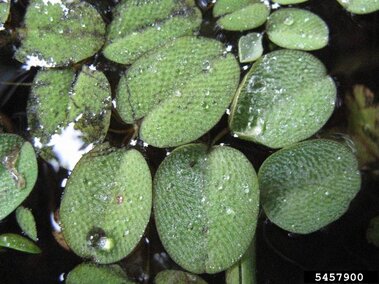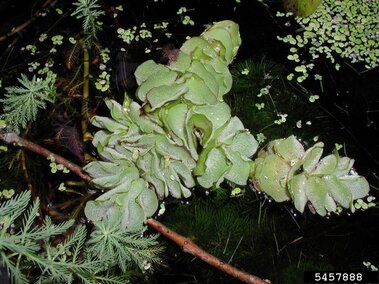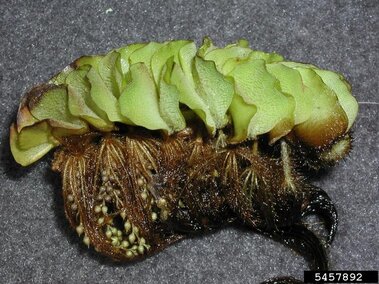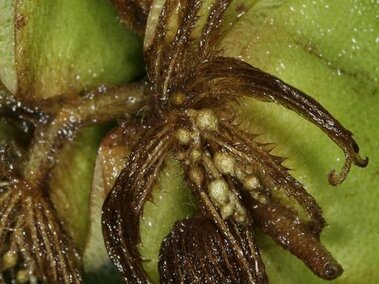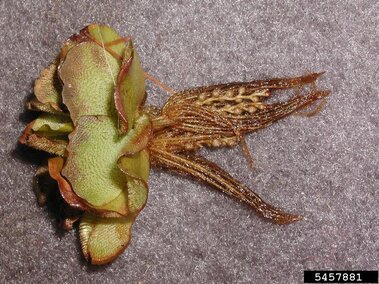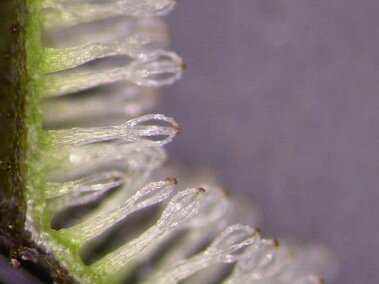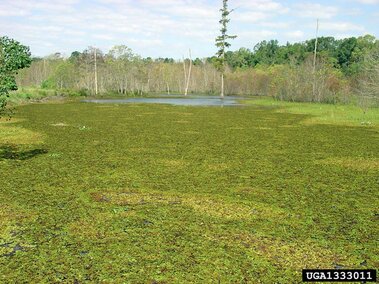General Information
Species Name: Salvinia molesta
Also Known As: Kariba weed, African pyle, aquarium watermoss, koi kandy, giant salvinia, aquarium watermoss, Australian azolla, waterfern, water spangles, giant azolla
Family: Salviniaceae (Floating Fern)
Growth Form: Forb (floating aquatic)
Life Span: Annual/Perennial
Flowering Dates: None. This plant does not produce flowers
Origin: South America
Noxious: Yes. Giant salvinia is listed as a Federal Noxious Weed under the Plant Protection Act, which makes it illegal in the U.S. to import or transport the species between states without a permit.
Category 1: Priority Aquatic Invasive Species
Why Is It Invasive?
Giant salvinia can invade almost any aquatic system. After it matures, it forms chains of leaves that run together to form thick mats on the surface of the water. These mats restrict oxygen and light availability causing death of the primary producers and disrupting the aquatic food chain. The dense chains of leaves can also prohibit or limit boater and angler access, reducing public water recreation activities.
What Does It Look Like?
General Characteristics
Giant salvinia is an aquatic fern that floats on the surface of the water. Submerged fronds are “stringy” and resemble roots.
Flowers
This plant does not produce flowers.
Leaves
Floating leaves are 0.5-1.5 in. (2.5-3.8 cm) long, oblong, and vary in color from green to gold to brown. The surfaces of the leaves have rows of arching hairs that look like little egg-beaters. When young, leaves are smaller and lie flat on the surface of the water.
Stems
Consists of green-brown/copper horizontal stems that float just below the water surface, and produce a whorl of three leaves (technically fronds) at each node.
Seeds
Reproduces by spores and by budding of broken stems or attached nodes.
Photos

Where Does It Grow?
The plant thrives in slightly acidic, high nutrient, warm, slow-moving freshwater, including lakes, rivers, ponds, streams, ditches, and rice fields, and can tolerate cold but not frozen water.
How Does It Spread?
This plant was first introduced into the United States as an ornamental and has become a popular aquarium plant. It continues to be kept in ponds and fish tanks, and is sold through market gardens, pet shops, landscapers, with supplies coming from both wild harvest and importation. Giant salvinia is cultivated in public and private aquatic gardens, and nurseries in at least
seventeen states in the USA. These sites are potential sources of release into natural systems and interestingly many cultivations are located in areas where infestations have been documented.
How Do I Control It?
Management of invasive aquatic plants involving either mechanical removal of plants or application of herbicides to public waters requires a permit. Contact the Contact the Nebraska Game and Parks Commission for more information.
Mechanical
Cutting or pulling the plant by hand or with equipment such as rakes or cutting blades could break it into fragments, allowing it to further spread. Contact the Nebraska Game and Parks Commission to determine appropriate removal methods.
Cultural
CLEAN your watercraft, trailer, angling gear and other equipment. Remove all aquatic vegetation and animal species from your equipment.
DRAIN your watercraft at the ramp by removing the boat plug and draining all live wells and ballast tanks.
DRY your watercraft, trailer and other equipment for at least 7 days before visiting another waterbody.
DON'T LET IT LOOSE. Do not release or transport exotic or non-native fish species to new ecosystems, and do not dump aquariums. It is unlawful to release any aquatic species into a waterbody other than the one from which it was harvested. Doing so can promote the spread of AIS.
Chemical
Application of chemicals to public waters requires a permit. Contact the Contact the Nebraska Game and Parks Commission for more information.
What Should I Do If I See It in Nebraska?
If you see giant salvinia in Nebraska, you should report it to the Nebraska Game and Parks Commission's Aquatic Invasive Species (AIS) Program using their AIS Report Form. For guidance on what information to include in your report, check out our reporting tips.
References and More Information
Center for Invasive Species and Ecosystem Health
USDA National Invasive Species Information Center
Nebraska Game and Parks Commission
North Carolina State Extension
